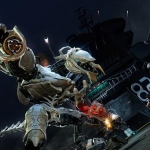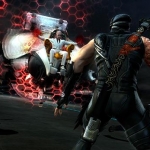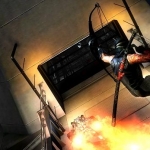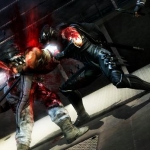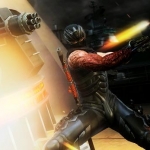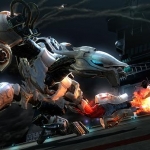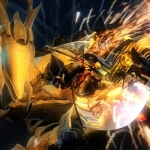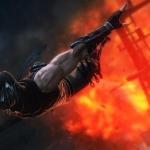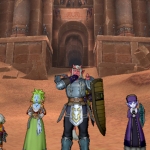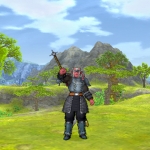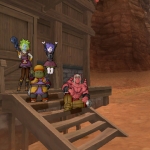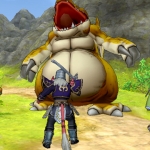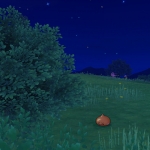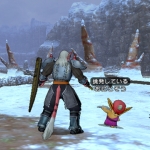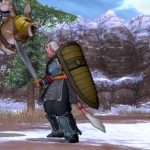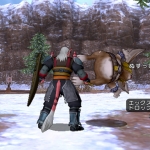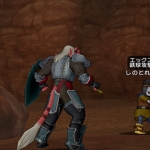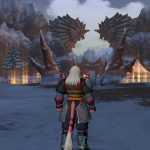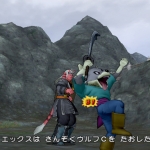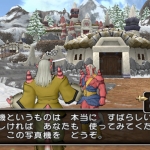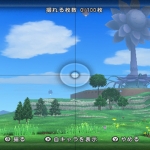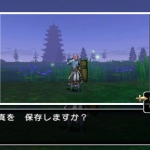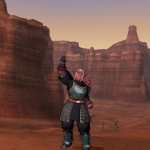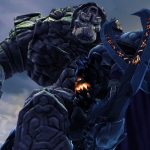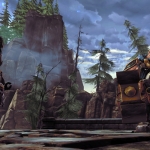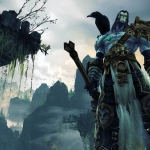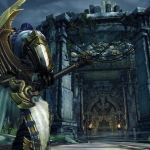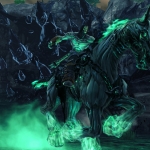Famitsu’s most-wanted games – issue 1211
Posted on 13 years ago by Brian(@NE_Brian) in 3DS, News, Wii, Wii U | 0 comments
01/02. [PS3] Dragon’s Dogma (Capcom) – 790 votes
02/01. [Wii] Dragon Quest X: Rise of the Five Tribes Online (Square Enix) – 644 votes
03/04. [PS3] One Piece: Kaizoku Musou (Namco Bandai) – 566 votes
04/05. [3DS] Monster Hunter 4 (Capcom) – 562 votes
05/03. [PSV] Persona 4: The Golden (Atlus) – 537 votes
06/07. [PS3] Resident Evil 6 (Capcom) – 405 votes
07/08. [PSP] Shining Blade (Sega) – 376 votes
08/11. [PSP] 2nd Super Robot Wars Z Hakai Volume (Namco Bandai) – 312 votes
09/23. [PS3] Resident Evil: Operation Raccoon City (Capcom) – 307 votes
10/16. [PS3] Asura’s Wrath (Capcom) – 277 votes
11/12. [PS3] Final Fantasy Versus XIII (Square Enix) – 307 votes
12/09. [3DS] Animal Crossing 3DS (Nintendo) – 251 votes
13/06. [3DS] Kingdom Hearts 3D: Dream Drop Distance (Square Enix) – 246 votes
14/28. [3DS] Fire Emblem: Awakening (Nintendo) – 223 votes
15/24. [3DS] Kid Icarus: Uprising (Nintendo) – 208 votes
16/14. [PS3] Metal Gear Rising: Revengeance (Konami) – 206 votes
17/17. [PS3] 2nd Super Robot Wars OG (Namco Bandai) – 201 votes
18/30. [PSP] God Eater 2 (Namco Bandai) – 177 votes
19/18. [PS3] The Last Remnant (Square Enix) – 171 votes
20/21. [3DS] Dragon Quest Monsters: Terry’s Wonderland 3D (Square Enix) – 168 votes
21/22. [PSP] Yakuza: Black Panther 2 (Sega) – 164 votes
22/23. [3DS] Fantasy Life (Level-5) – 154 votes
23/20. [PS3] The Last Guardian (SCEJ) – 153 votes
24/27. [3DS] Hatsune Miku & Future Stars: Project Mirai (Sega) – 148 votes
25/19. [PS3] Toki to Towa (Namco Bandai) – 136 votes
26/26. [PS3] Persona 4: The Ultimate in Mayonaka Arena (Atlus) – 123 votes
27/29. [PS3] The Witch and the Hundred Soldiers (NIS) – 115 votes
28/—. [PSP] Tales of the Heroes: Twin Brave (Namco Bandai) – 111 votes
29/—. [PSP] Nenodroid Generation (Namco Bandai) – 87 votes
30/—. [PS3] Street Fighter X Tekken (Capcom) – 84 votes
New Ninja Gaiden III screenshots
Posted on 13 years ago by Brian(@NE_Brian) in Screenshots, Wii U | 0 comments
New Ninja Gaiden III trailer
Posted on 13 years ago by Brian(@NE_Brian) in Videos, Wii U | 0 comments
2011 Wii U patent points to likely canned features: 3D, HD display
Posted on 13 years ago by Brian(@NE_Brian) in News, Wii U | 0 comments
A September 2011 patent filed by Nintendo may provide some insight as to what sort of features the company was considering for the Wii U.
Much of the interesting tidbits pertain to the console’s controller. It seems that Nintendo has been experimenting with 3D and an HD display for the console’s innovative controller.
A quick rundown of the patent’s more noteworthy details can be found below.
– Could come with voice recognition software
– Players could give voice commands in-game
– “one or more additional microphones…may be provided on the front and/or back surfaces” of the controller
– Controller’s camera could recognize a face/parts of a person’s face
– This face data could be stored in Wii U’s main memory
– Wii U could be used as a videophone “exchanging images and sound”
– Hints that Skype/Skype-like service was being considered for Wii U; may still be possible
– Peripheral attachment examples: “a game-specific controller (gun-shaped controller, etc.) or an input device such as a keyboard”
– Wii U “might” feature a 3D display
– Wii U controller “might” feature an HD display (controller is sub-HD resolution of 850x or so)
Thanks to Captain N for the tip!
New Dragon Quest X screenshots
Posted on 13 years ago by Brian(@NE_Brian) in Screenshots, Wii, Wii U | 0 comments
New Darksiders II screenshots
Posted on 13 years ago by Brian(@NE_Brian) in Screenshots, Wii U | 0 comments
Miyamoto on the challenging Skyward Sword prototype, Zelda stories are important, enjoying Pikmin 3 development, more
Posted on 13 years ago by Brian(@NE_Brian) in 3DS, General Nintendo, News, Wii, Wii U | 0 comments
Shigeru Miyamoto has opened up about his most/least favorite Mario Kart characters, what it and means to him to be working on Mario/Zelda for so long in a new PopWatch interview. Spoiler alert: he hates Toad.
Miyamoto also commented on a Skyward Sword prototype that was more challenging that the final product, how he feels about the story element in Zelda games, his enjoyment on making Pikmin 3, and more.
All of Miyamoto’s responses can be found after the break.
More fuel to the Sonic & SEGA All-Stars Racing sequel fire
Posted on 13 years ago by Brian(@NE_Brian) in 3DS, Rumors, Wii U | 0 comments
A rumor popped up last month that Sumo Digital has been working on a sequel to Sonic & SEGA All-Stars Racing. Kotaku is backing up this speculation, noting today that the game will be released this holiday season.
If the original rumor is to be believed, SEGA will publish the game for Wii U, 3DS, and Vita.
Japanese trademark updates
Posted on 13 years ago by Brian(@NE_Brian) in General Nintendo, News, Wii, Wii U | 0 comments
Lots of Wii U trademarks from Nintendo…
?????????????? (Creatures Inc.)
??2011-088359 ???????? (gem challenge)
??2011-088364 ???????? (Battle Carnival)
??? (Nintendo)
??2011-088682 ?????????????????????????????
??2011-090605 ?????????????
??2011-092510 ?????
??2011-092511 §?????
??2012-002228 ?????
??2012-002229 §?????
??2012-002230 §?????
NBGI
??2011-088881 ????????????????????????
??2011-088882 ?????????????????????????????????
??2011-088883 ??????????????
??2011-089213 ?????
??2011-089214 ?????
??2011-089597 ????????????????
??2011-090434 ????????? (new world Cruise)
??2011-091374 ??????????
??2011-091375 ???????????
??2011-091376 ???????????
??2011-091721 ??????????????????
Konami
??2011-083484 ???????
??2011-084150 ??????????????????????????
??2011-085040 ?????????? (collection series)
??2011-087901 ????????????????????
??2011-089497 ?????????????????
??2011-089499 ???????????
??2011-090060 ???
??2011-091429 ?????????
SQEX
??2011-088605 ?????
??2011-088606 ????
??2011-088607 ?????
??2011-088608 ???????
??2011-088609 ??????
??2011-089981 ???????????????????
??2011-090386 ?????????????????????????
??2011-091486 ????????????????
Sega
??2011-087852 ????????????
??2011-090545 ???????
??2011-090952 ???????????
??2011-090953 ?????????????????
??2011-090954 ???????????????????????
??2011-090957 ???????????????????
Take 2
??2011-090169 §??????????????????????
Marvelous AQL
??2012-000311 ??????????? (super creators)
Team Ninja wants to make Ninja Gaiden III innovative for Wii U, won’t rush development
Posted on 13 years ago by Brian(@NE_Brian) in News, Wii U | 0 comments
As far as we know, Tecmo Koei is still preparing Ninja Gaiden III: Razor’s Edge for the launch of Wii U. It doesn’t sound like Team Ninja is looking to rush the game out the door, though.
Team Ninja head Yosuke Hayashi told IndustryGamers that the studio is looking “to take some time to figure out how to make Ninja Gaiden 3 innovative and fit with the hardware.”
He said:
“Right now, we want to develop for Wii U, but we need to take some time to figure out how to make Ninja Gaiden 3 innovative and fit the hardware. We’ll think about Wii U and see how we can implement new features instead of rushing it.”

